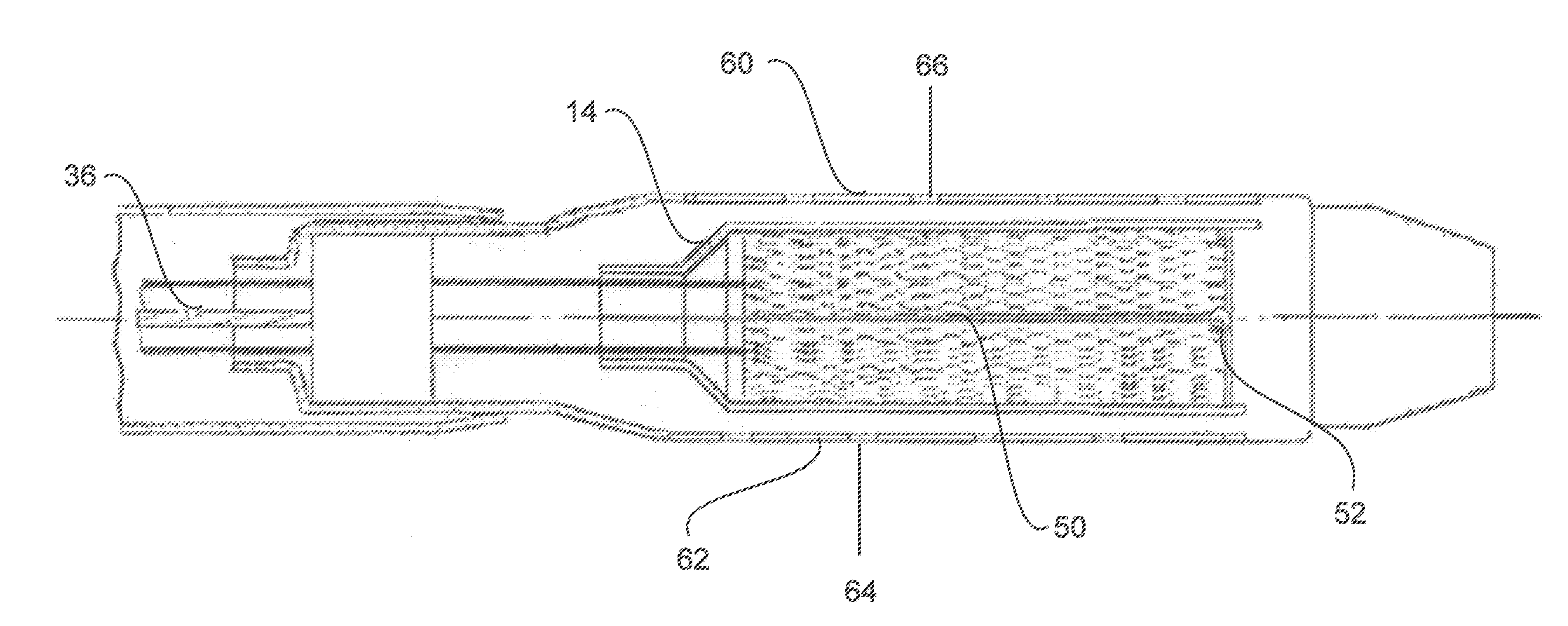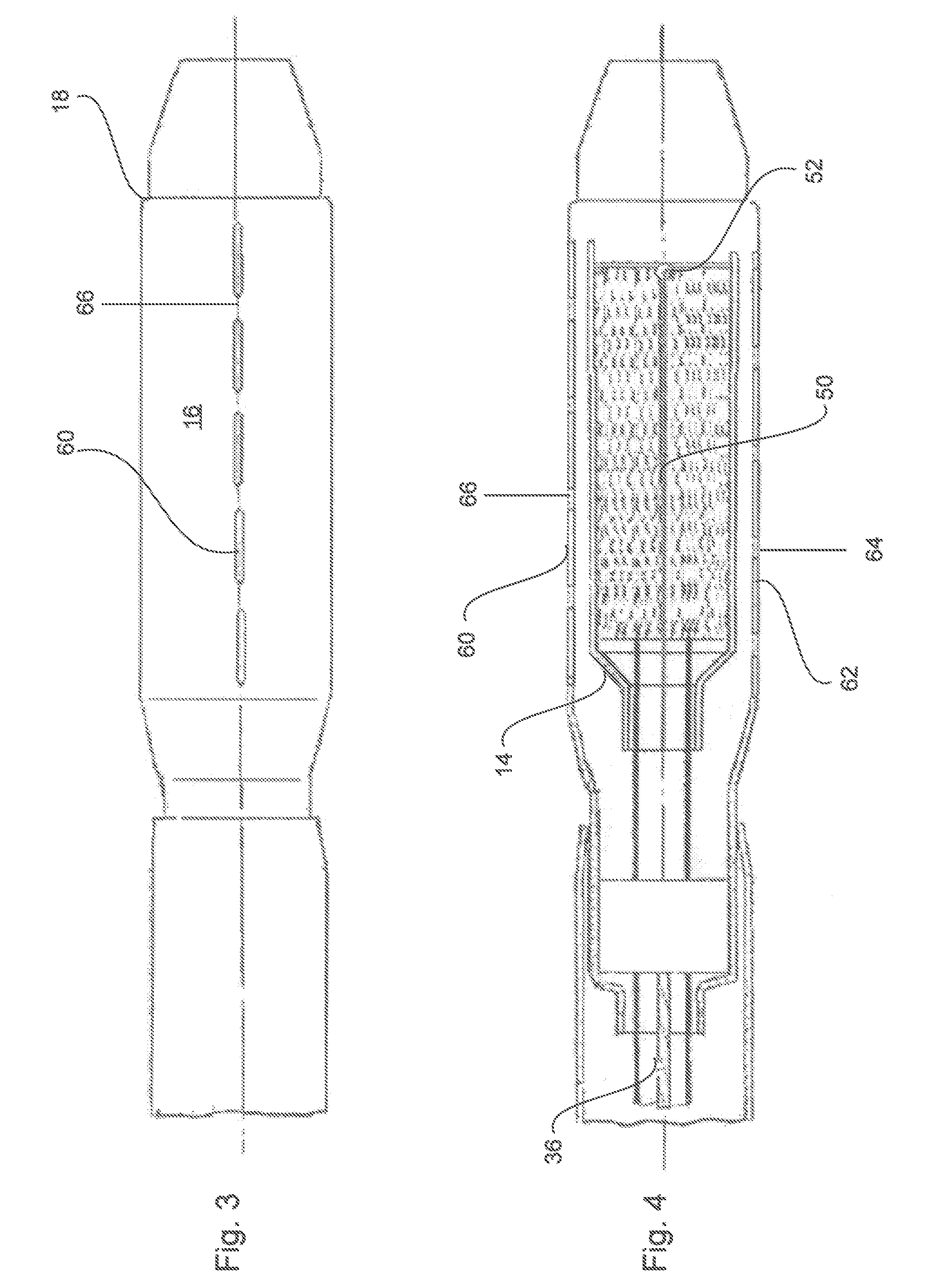Device to release a self-expanding implant
- Summary
- Abstract
- Description
- Claims
- Application Information
AI Technical Summary
Benefits of technology
Problems solved by technology
Method used
Image
Examples
Embodiment Construction
[0021]Looking first at FIG. 1 we see a self-expanding stent 10 radially confined within a rolling membrane 12 which features an inner sleeve 14, an outer sleeve 16 and a rolling edge 18 distal of the bed 20 that receives the stent 10. The bed 20 is on a shaft 22 that defines a guidewire lumen 24 and carries an atraumatic tip 26 that has a rebate 28 to receive the distal end of the rolling membrane 12 and the rolling edge 18.
[0022]At the proximal end of the inner sleeve 14, the rolling membrane 12 is secured at an annulus 30 to the shaft 22. The other end of the rolling membrane 12 extends along the shaft proximally until its end 32 is proximal of a collar 34 that is freely slidable on the abluminal surface of the shaft 22. The membrane 12 is secured to the abluminal surface of the collar 34. The collar 34 is on the distal end of a pull wire 36 that runs all the way to the proximal end of the catheter delivery system of which the distal end is shown in FIG. 1. The reader will appreci...
PUM
 Login to View More
Login to View More Abstract
Description
Claims
Application Information
 Login to View More
Login to View More - R&D
- Intellectual Property
- Life Sciences
- Materials
- Tech Scout
- Unparalleled Data Quality
- Higher Quality Content
- 60% Fewer Hallucinations
Browse by: Latest US Patents, China's latest patents, Technical Efficacy Thesaurus, Application Domain, Technology Topic, Popular Technical Reports.
© 2025 PatSnap. All rights reserved.Legal|Privacy policy|Modern Slavery Act Transparency Statement|Sitemap|About US| Contact US: help@patsnap.com



